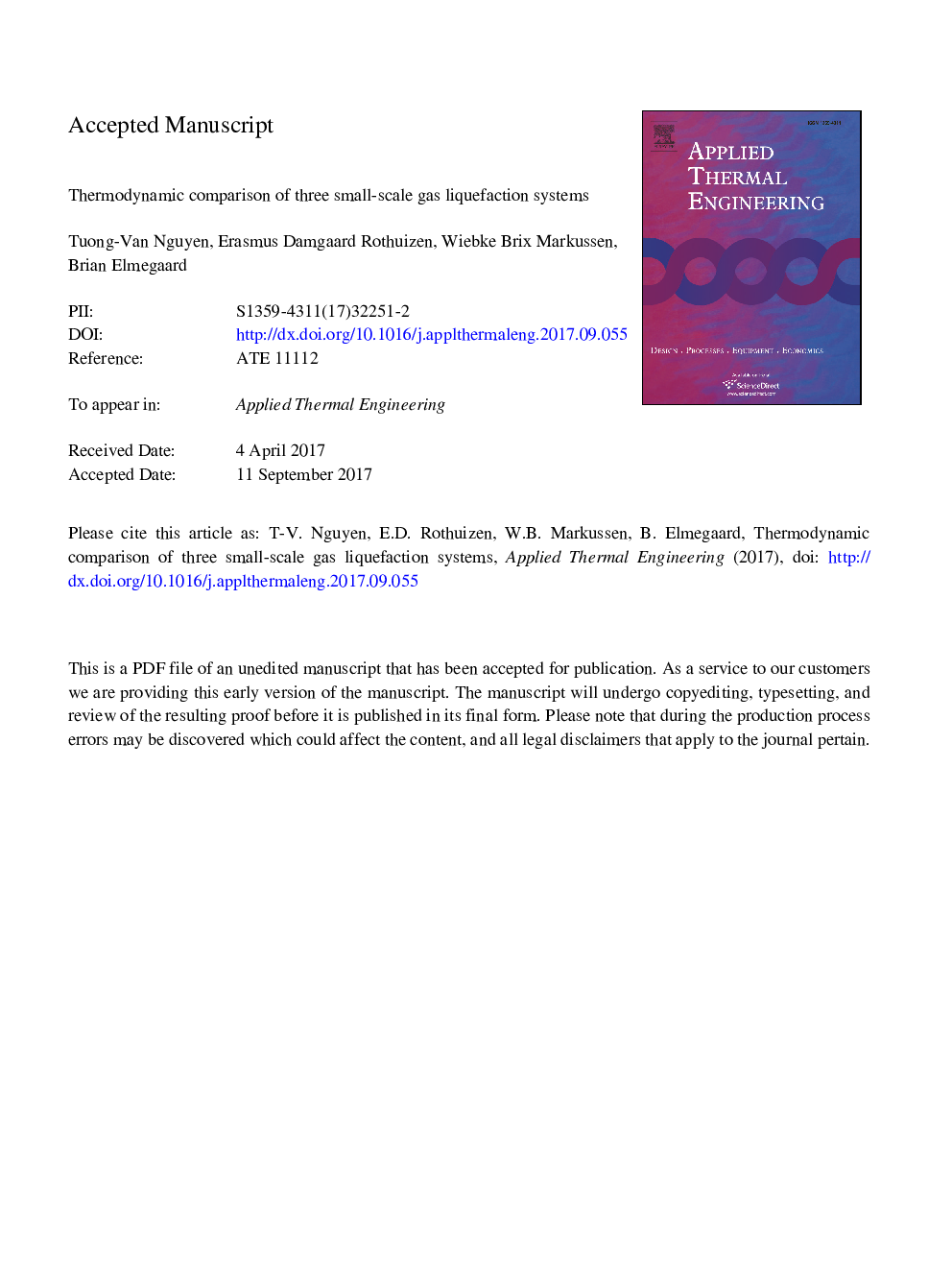| Article ID | Journal | Published Year | Pages | File Type |
|---|---|---|---|---|
| 4990843 | Applied Thermal Engineering | 2018 | 27 Pages |
Abstract
Natural gas liquefaction systems are based on refrigeration cycles, which can be subdivided into the cascade, mixed refrigerant and expander-based processes. They differ in their configurations, components and working fluids, and have therefore various operating conditions and equipment inventory. The present work investigates three configurations suitable for small-scale applications because of their simplicity and compactness: the single-mixed refrigerant, single and dual reverse Brayton cycles. The impact of different feed compositions and refrigerant properties is analysed. A detailed assessment of the energy and exergy flows is conducted, and the most promising cycle layouts are identified by performing multi-objective optimisation procedures. The findings illustrate the resulting trade-offs between the system performance and size in different operating conditions. Mixed-refrigerant processes prove to be more efficient (1000-2000Â kJ/kgLNG) than expander-based ones (2500-5000Â kJ/kgLNG) over larger ranges of operating conditions, at the expense of a greater system complexity and higher thermal conductance (250-500Â kW/K against 80-160Â kW/K). The results show that the use of different thermodynamic models leads to relative deviations of up to 1% for the power consumption and 20% for the network conductance. Particular caution should thus be exercised when extrapolating the results of process models to the design of actual gas liquefaction systems.
Keywords
Related Topics
Physical Sciences and Engineering
Chemical Engineering
Fluid Flow and Transfer Processes
Authors
Tuong-Van Nguyen, Erasmus Damgaard Rothuizen, Wiebke Brix Markussen, Brian Elmegaard,
